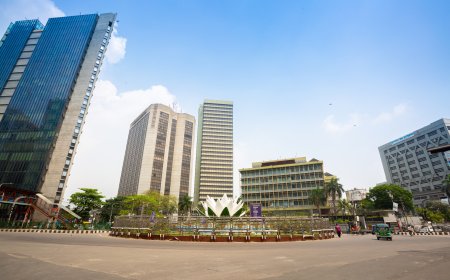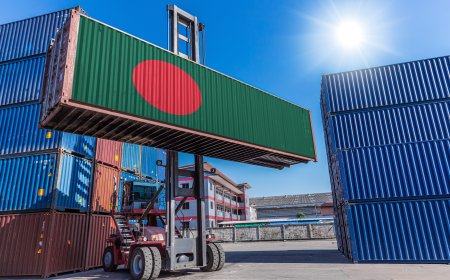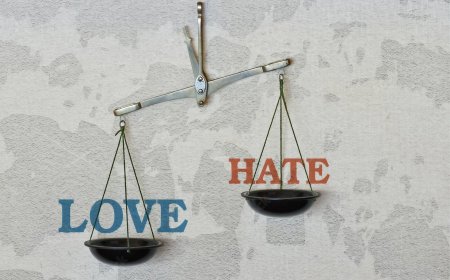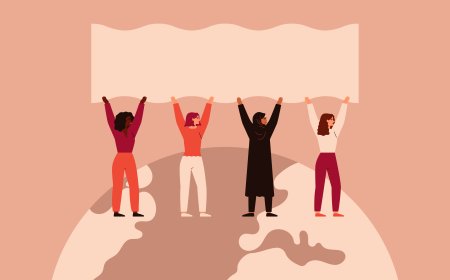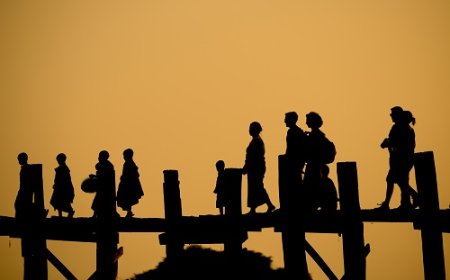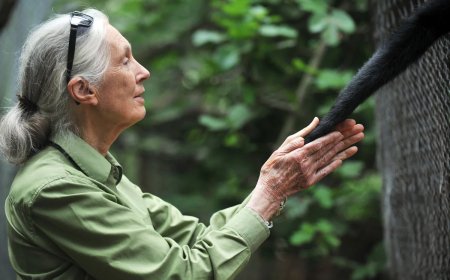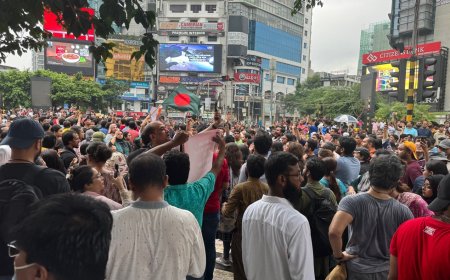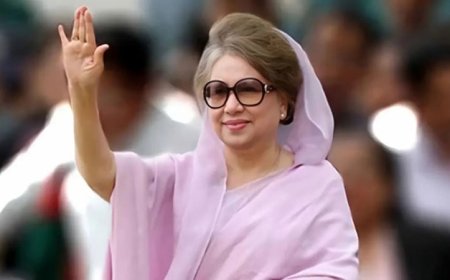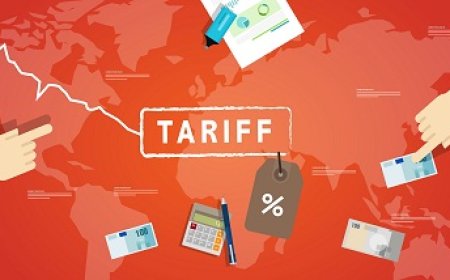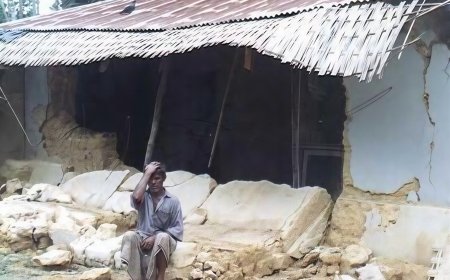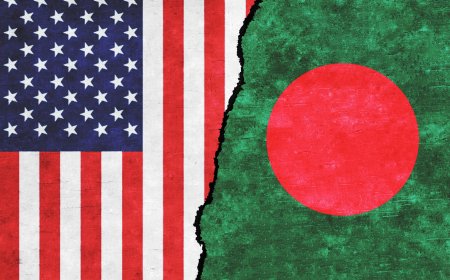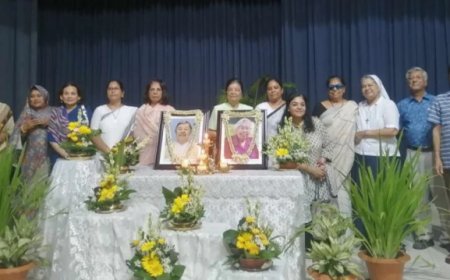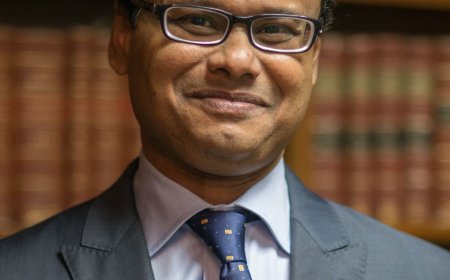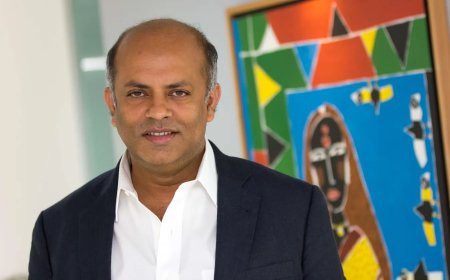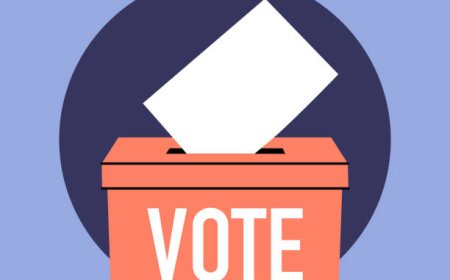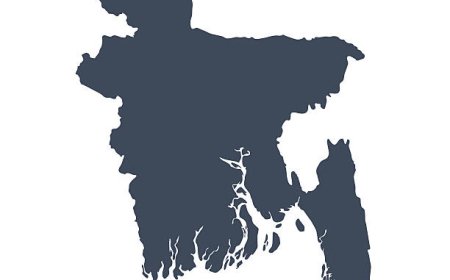Opening Doors, Unlocking Potential
Bangladesh has a large, talented youth population eager to study and contribute abroad. The US should double its student intake from Bangladesh to tap into this potential, boost its economy, and strengthen long-term partnerships.
Have you ever stood on the vibrant, thrumming streets of Dhaka, feeling the pulse of its boundless energy, the sheer youthful force of a nation hurtling forward? It’s an undeniable truth: Bangladesh is not just a country; it’s a demographic phenomenon, a vast reservoir of youthful ambition waiting to be tapped.
In an era where global competition for talent and strategic alliances dictates the pace of progress, America’s future prosperity isn't solely forged within its own borders. It depends, increasingly, on forging vital partnerships. And right now, one of the most promising, yet surprisingly underexplored, lies with Bangladesh.
Forget the stale, often reductive narratives that once defined South Asia. It's time to see Bangladesh for what it is: a nation brimming with potential, possessing a demographic dividend of vibrant youth, a long tradition of moderate pluralism, and an unshakeable eagerness to embrace the future.
By doubling its F-1 student intake from Bangladesh, the US isn't merely filling university seats. It’s making a profound, pragmatic investment in its own economic vitality, its cultural tapestry, and its enduring strategic resilience, mirroring, and indeed, building upon the successes seen with other key partners like India.
The Pulse of a Nation: A Demographic Dividend for America
Imagine a landscape where over 65% of 174 million people are under the age of 30. This isn't some futuristic projection or a distant, academic theory; this is Bangladesh, today. This astonishing youth bulge is more than just a statistic; it's a vast, dynamic reservoir of students -- eager, ambitious, hungry for opportunity, innovation, and global exposure.
Why should Bangladesh's equally fervent ambition and demographic reality be any less recognized or supported by the US than India's, which has expertly leveraged its own vast youth population to become a global leader in sending students abroad?
Think of it: each year, thousands of these bright minds graduate, their eyes set on horizons beyond their borders. By systematically increasing the F-1 student intake from Bangladesh, the US can tap directly into this youthful asset. These aren't just numbers on a spreadsheet; they are future innovators poised to disrupt industries, entrepreneurs ready to build, and skilled workers prepared to fuel the critical sectors of the American economy. We're talking about a vibrant, motivated infusion of talent that can inject new lifeblood into research labs, tech startups, and manufacturing floors across the nation, just as Indian talent has done for decades.
The Unspoken Disparity: Why We Must Double Bangladesh's Intake to Match India's Ratio
Now, let's talk about the glaring, almost uncomfortable, truth. In the realm of international student mobility to the US, one nation stands out as a colossal success story: India. In Fiscal Year 2022, India sent 188,681 students to the US. With an estimated population of approximately 1.46 billion in 2025, that translates to roughly one F-1 student per every 7,700 people. India's pioneering educational loan infrastructure and robust counseling networks have made this scale possible, allowing a massive outflow of talent.
Contrast this with Bangladesh. While the US Embassy in Dhaka proudly reported over 17,000 Bangladeshi students in the US in 2023-2024 -- a commendable surge -- F-1 visa issuances in FY2022 were around 11,524, and in FY2024, closer to 6,401. With Bangladesh's population estimated at roughly 175 million in 2025, even using the most generous figure of 17,000 total students in the US, this puts its ratio at approximately one student per 10,300 people. If we consider annual visa issuances, the disparity is even starker.
Do you see the chasm? Bangladesh, a nation with a comparable youth bulge relative to its overall size, is sending proportionally significantly fewer of its bright minds to the US than India. We are not asking for an unfair advantage; we are advocating for parity. To bring Bangladesh's F-1 student ratio closer to India's -- to truly reflect the talent and aspiration that exists -- we must aim to at least double the current intake, reaching upwards of 52,000 students annually. This isn't an arbitrary number; it's a strategic move to unlock a proportional share of talent from a critical South Asian partner, leveraging potential in much the same way India has.
A Different Kind of Loyalty: Bangladeshi Students in a Geopolitical Chessboard
This call for increased intake takes on even greater urgency when viewed through the lens of current geopolitical realities. Consider the significant, and increasingly complex, dynamic with Chinese students in the US. While China has historically been the largest source of international students, there's a discernible and accelerating trend of these students returning to their homeland post-graduation. This "brain gain" for China is a direct result of their government's strategic policies and the escalating technological competition, often termed the "tech war," with the US.
China actively incentivizes its returning scholars, offering lucrative positions and research opportunities designed to repatriate the very expertise gained in American universities, ultimately fueling their own national technological advancement. This means that while Chinese students contribute immensely during their studies, their long-term contribution to the US innovation ecosystem can be limited by their nation's strategic imperative for them to return.
Here lies a critical distinction, and a profound opportunity with Bangladesh. Unlike the state-driven repatriation seen with many Chinese scholars, Bangladeshi students historically demonstrate a strong propensity to remain and contribute to the US economy and society post-graduation.
For many, the American dream isn't just about obtaining a degree; it's about building a life, a career, and a future within the United States. This "brain gain" for America is a direct, long-term boon, providing dedicated, skilled talent who will continue to innovate, pay taxes, and build communities here. In the midst of this ongoing technological and economic competition, fostering a deep pipeline of reliable, loyal talent from a stable, friendly nation like Bangladesh isn't just economically smart; it's a strategic imperative for America's sustained global leadership.
Beyond Stereotypes: A Moderate Muslim Nation That Integrates Smoothly
Let’s address the elephant in the room: concerns about cultural assimilation. It's a valid query in a complex world. Yet, Bangladesh offers a compelling counter-narrative, often overlooked in the broader South Asian context. As a moderate Muslim-majority country with a long and storied tradition of pluralism and secular governance, its students consistently demonstrate a remarkable ease of integration into American academic and social life. This fundamental compatibility should be a cornerstone of US policy.
Consider the anecdotes you hear from university campuses: Bangladeshi students, far from isolating themselves, become integral parts of campus communities, leading student organizations, excelling in their studies, and forming lasting friendships. I once spoke with a university administrator who recounted how Bangladeshi students were often among the first to volunteer for interfaith dialogues, bringing a nuanced perspective on Islamic pluralism that enriched the entire campus -- a contribution as valuable as that of any other international cohort.
They aren't just adapting; they're actively acting as vital cultural bridges between South Asia and the West, subtly yet powerfully fostering deeper bilateral ties and reducing social friction. This smooth integration isn't just a matter of convenience; it’s a profound benefit, enriching the very fabric of the educational institutions and welcoming communities that embrace them. This contrasts favorably with perceptions, sometimes valid, sometimes exaggerated, of integration challenges from other regions.
The Undeniable Logic: Economic Impact Amplified by Demographics and Culture
The economic power of international students is no secret. Each student typically injects an average of $40,000 annually into the US economy. When these students, particularly from Bangladesh, pursue STEM disciplines and stay post-graduation via OPT and work visas, this financial impact isn't just amplified; it transforms into sustained economic growth. This is precisely the engine that has driven significant economic benefits from the large intake of Indian STEM students, and Bangladesh offers a similarly promising trajectory.
Imagine: more long-term STEM talent retained via OPT and work visas, providing a continuous flow of expertise. Picture increased consumer spending rippling through housing, services, and tech sectors. Envision stronger diaspora networks supporting US-Bangladesh relations, becoming powerful advocates and economic connectors, much like the influential Indian-American diaspora.
Doubling Bangladeshi F-1 students could unlock over $2.2 billion annually in economic activity, delivering thousands of highly skilled workers to American industries crying out for talent. This isn't a "brain drain" from Bangladesh; it's a dynamic "brain gain" for both nations, a cyclical flow of knowledge, innovation, and prosperity that enriches two societies.
The Unseen Hurdles: The Agonizing Sacrifice vs. India’s Structural Support
But for all this potential, there are unseen hurdles that silently diminish the flow of this talent from Bangladesh. To truly capitalize on this demographic dividend, America must acknowledge, and actively help overcome, the systemic challenges Bangladeshi students currently face. Here, a stark comparison with India is not just illustrative; it's instructional, laying bare a painful reality.
India's prolific outflow of students is no accident. Its government has proactively built a robust ecosystem of support. Think of initiatives like India's Central Sector Interest Subsidy Scheme (CSIS), where eligible students from economically weaker sections receive a full interest subsidy on their education loans during the entire course duration plus one year. This means they pay zero interest until they start earning, a monumental relief.
Public banks in India offer competitive interest rates, often starting around 7.5% per annum post-moratorium, and schemes like the Credit Guarantee Fund Scheme for Education Loans (CGFSEL) provide government guarantees for loans up to ₹7.5 lakhs, often requiring no collateral at all.
I recall speaking with a student from Chennai who, despite his modest family background, secured a loan with such an interest subsidy that made his Master's in Computer Science in the US a reality. This financial scaffolding, coupled with a globally-minded middle class and powerful diaspora networks, creates a well-trodden, viable path to international education.
In stark contrast, Bangladesh's governmental support for its aspiring global scholars remains tragically underdeveloped. There is no widespread, government-subsidized education loan program. While Bangladeshi commercial banks do offer "Foreign Education Loans," these are typically market-driven, often with interest rates ranging from 9% to 14% Annual Percentage Rate (APR), with no subsidy during the study period.
Crucially, these loans almost universally demand substantial collateral -- often the family’s sole property -- or a strong personal guarantor with verifiable high income. I've borne witness to countless heartbreaking conversations where parents, facing the prohibitive costs of US education, agonize over the decision to sell their ancestral land or mortgage their only home just to give their child a chance.
This isn't merely a policy gap; it's an agonizing personal sacrifice, a stark contrast to the comparatively accessible, structured funding mechanisms available to many Indian students. This immense financial burden filters out countless brilliant, ambitious young Bangladeshis, simply because their families lack liquid assets or collateral.
Beyond finance, two other critical, yet often overlooked, gaps persist: English language proficiency and comprehensive student counseling. While English is mandated in schools, the practical, academic fluency required for success in American universities often falls short. It's not just about passing a test; it's about engaging in complex discourse, contributing to vibrant discussions, and navigating a new culture.
I remember interviewing a Bangladeshi student who, despite scoring well on the IELTS, confessed to struggling initially with the rapid-fire academic debates in her American classroom -- a challenge that could have been mitigated with more communicative English practice in her formative years, a skill often honed more extensively in India's education system. And then there's counseling.
For most Bangladeshi high school students, reliable, unbiased advice on international study is a luxury. They often stumble through a labyrinth of informal advice, unverified online sources, or private agencies that, while helpful for some, prioritize placements over genuine student fit.
This contrasts sharply with India’s robust private counseling sector and growing school-based guidance. Without early, consistent, and credible guidance, even the most brilliant minds can feel lost, their global aspirations extinguished before they even truly ignite.
Forging the Future: Nurturing AI Prowess from Grade Six
But here's where the narrative truly shifts from opportunity to imperative: the AI revolution. The future workforce, across every sector imaginable, will be fundamentally shaped by artificial intelligence. To merely participate in this future is not enough; nations must actively cultivate a workforce capable of innovating within it. For Bangladesh, with its massive youth bulge, the chance to leapfrog into the AI age is immense, but it demands proactive, systemic integration of AI learning into its foundational education, much like forward-thinking states in India are already exploring.
While discussions around AI in higher education are stirring in Bangladesh, a broad, structured curriculum for AI literacy at the pre-university level is still nascent. This stands in stark contrast to global trends where AI concepts -- from computational thinking to ethical implications -- are introduced to younger students.
I envision a future where a Bangladeshi sixth grader isn't just learning arithmetic, but also the basics of how an algorithm "learns" or how data biases can affect AI outputs, a scenario increasingly common in some progressive Indian schools. Without this early exposure, Bangladeshi students risk entering a global job market significantly disadvantaged, not just in niche technical roles but across professions increasingly influenced by AI. Imagine the untapped brilliance, the algorithms waiting to be coded, the solutions yet to be conceived, simply because the foundational knowledge isn't uniformly accessible.
Rectifying the Imbalance: A Shared Vision for Empowerment
To truly unlock Bangladesh’s full potential and secure America’s strategic interest in this relationship, a bold, multi-pronged approach, focusing on tangible policy steps, is essential:
1. Empowering Bangladesh to Cultivate Its Global-Ready Cohort
Financial Access: Bangladesh must initiate national education loan policies with crucial interest subsidies and credit guarantees, mirroring India's successful models. This means moving beyond the current system where parents sacrifice their homes. Consider a dedicated, government-backed Overseas Education Fund for merit-cum-means scholarships, perhaps seeded by diaspora contributions.
English Language Proficiency: A dramatic overhaul of the English language curriculum from Grade Six, emphasizing communicative English, critical thinking, and academic writing, is paramount. This requires significant investment in teacher training programs—equipping educators with modern, engaging methodologies. The U.S. Mission could expand its English Access Microscholarship Programs, reaching wider audiences.
Structured Counseling: The Bangladeshi Ministry of Education must mandate comprehensive student counseling services in all high schools, training a dedicated cadre of professional counselors. Establish government-accredited resource hubs (physical and online) to provide free, unbiased information on international study, moving beyond the current fragmented private sector, as India has done.
The AI Revolution from Grade Six: This is non-negotiable for the future. Bangladesh must integrate dedicated AI literacy modules or courses starting from Grade Six. These aren't just about theory; they're about teaching fundamental concepts, ethical AI, computational thinking, and encouraging hands-on, project-based learning with age-appropriate tools. This requires massive teacher training and the development of accessible, culturally relevant AI learning materials, taking cues from educational innovators in India and globally.
2. Strategic US Engagement to Bridge the Gaps
Expanded Scholarships & Partnerships: US universities and governmental bodies (like USAID) should significantly increase need-based and merit-based scholarships specifically targeting Bangladeshi students, directly addressing the financial hurdles that differ so dramatically from those in India.
Pedagogical & Curricular Support: U.S. academic institutions and tech giants can collaborate directly with Bangladesh's Ministry of Education to share expertise in K-12 AI curriculum design and support "train-the-trainer" programs for Bangladeshi educators.
Technology & Software Access: Facilitate access to educational AI software, open-source AI tools, and relevant online learning platforms for Bangladeshi schools, possibly through non-profit initiatives or educational discounts.
Enhanced Outreach & Visa Facilitation: The US must expand its EducationUSA outreach beyond major cities, offering clearer, simplified guidance on financial requirements and streamlining visa processing. Highlighting post-graduation opportunities like OPT and STEM extensions can also make the initial investment more appealing, much as these pathways have attracted Indian students, particularly when combined with more accessible funding options.
The Triple Win: Youth, Culture, and a Future Forged Together
Bangladesh’s youthful population isn’t just a demographic fact; it's a dynamic force waiting to be unleashed, much like India's has been. Its moderate Islamic identity isn’t just a cultural descriptor; it’s a powerful foundation for seamless integration. Its strong propensity to contribute to the US long-term offers a strategic advantage amidst shifting global tech dynamics. And its burgeoning desire to join the global AI frontier isn’t just an ambition; it's a strategic necessity. Together, these elements make Bangladesh a uniquely valuable source of international students.
Doubling F-1 students from Bangladesh is far more than a numerical target; it’s an open invitation to energetic, adaptable, and skilled young people who will grow with America's innovation economy, contribute profoundly to its technological leadership, and immeasurably strengthen the ties between two friendly nations.
The opportunity is ripe. Bangladesh’s youth are ready, often at immense personal cost. The US stands to gain -- economically, socially, and strategically -- by opening its doors wider and actively helping to build the accessible pathways that will define the future of global talent. It's time to act.
What's Your Reaction?













